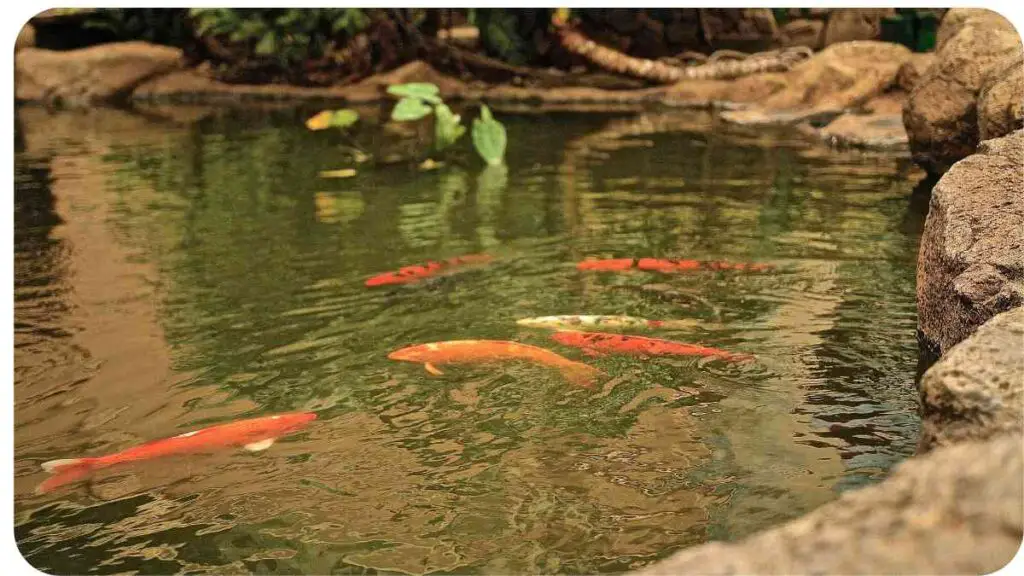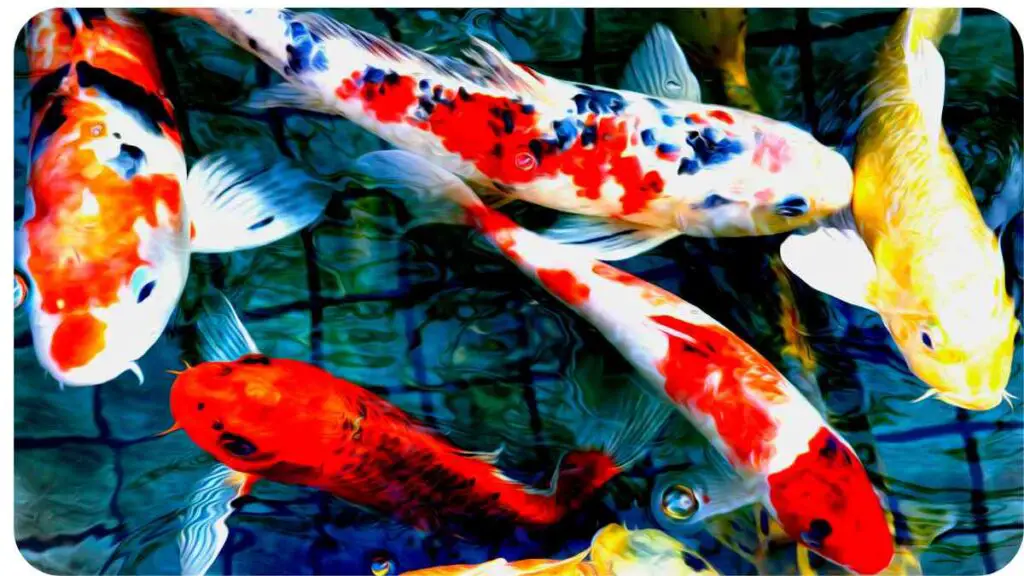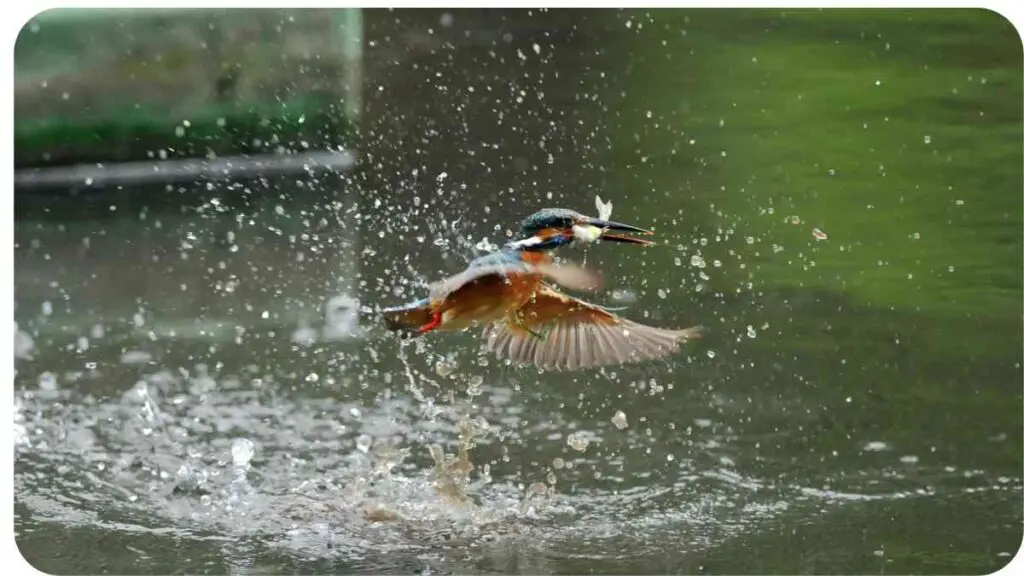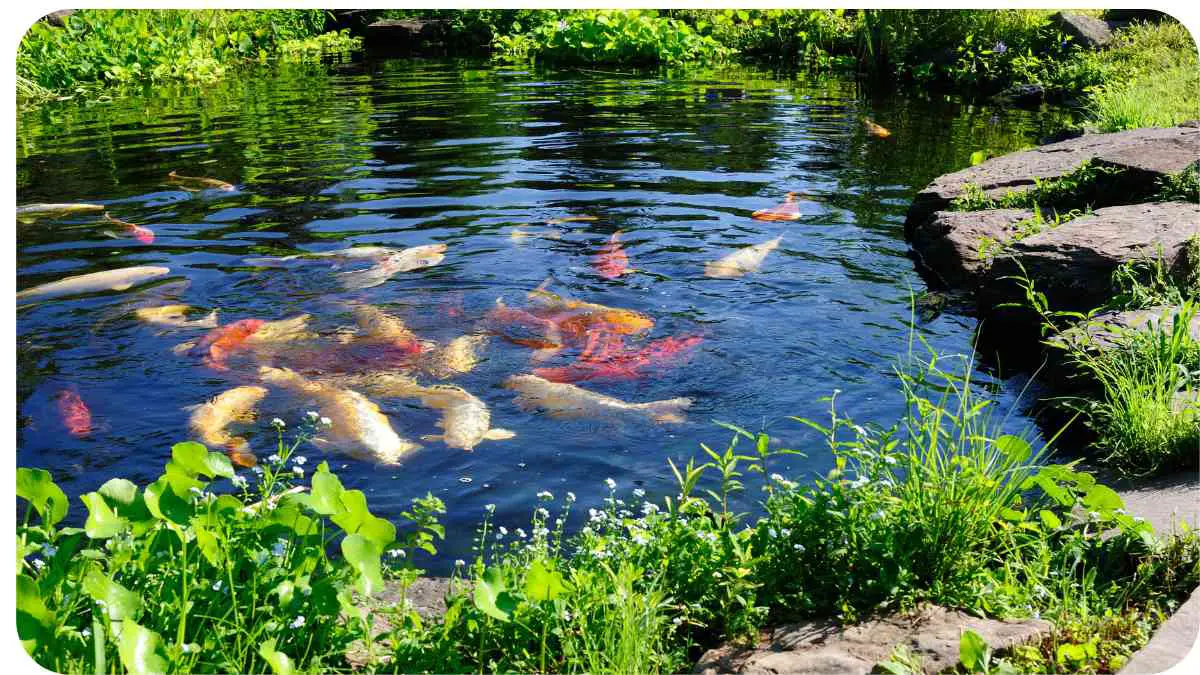A backyard pond isn’t just a tranquil retreat it’s a living ecosystem that requires consistent care. But what happens when your peaceful oasis turns into a fish graveyard? Losing fish can be frustrating, especially when you’ve invested time and energy in creating a perfect habitat. It’s more than just about aesthetics; your fish’s health is a direct indicator of your pond’s ecosystem balance.
Let’s talk about why fish loss happens and, more importantly, how you can stop it in its tracks.
| Key Points |
|---|
| Regular water testing is crucial for maintaining fish health. |
| Prevent algae overgrowth by limiting nutrients and adding plants. |
| Ensure proper aeration to maintain adequate oxygen levels. |
| Use pond covers or deterrents to protect fish from predators. |
| Monitor fish behavior to detect early signs of stress or illness. |
| Water changes help dilute toxins and maintain water quality. |
| Keep a seasonal pond maintenance schedule to avoid common issues. |
| Control algae growth with natural methods before using algaecides. |
| Manage pond water loss by checking for leaks and adjusting water flow. |
| Install a pond heater or de-icer to keep fish safe in winter months. |
Common Causes of Fish Loss
While you might be tempted to blame the water quality (and you’re not wrong), fish loss can be caused by various factors. Things like poor oxygen levels, overcrowding, disease, and even predators can contribute. Identifying the root cause is your first step toward ensuring the survival of your finned friends.
2. Understanding Fish Loss

What Is Fish Loss?
Fish loss refers to the unexpected death of fish in your pond, often in large numbers. It’s not just one unlucky fish it’s a pattern of death that can devastate your pond’s population. Fish loss can be gradual or occur in a sudden event, sometimes referred to as a “fish kill.”
Early Warning Signs of Fish Loss
The key to addressing fish loss is catching it early. Keep an eye out for sluggish behavior, gasping at the surface, discoloration, or fish isolating themselves from the group. These can all be signs that something is off in your pond environment.
Impact of Environmental Factors on Fish Health
Your pond’s environment is constantly shifting. Temperature, water pH, and oxygen levels can all fluctuate, and fish are incredibly sensitive to these changes. A seemingly small environmental disruption can throw off your pond’s balance, making it harder for fish to survive.
3. Common Causes of Fish Loss in Backyard Ponds
Poor Water Quality
Poor water quality is one of the leading causes of fish death. Fish rely on clean, oxygen-rich water to thrive, and any imbalance in your pond’s water chemistry can lead to stress, disease, and death. Factors such as pH, ammonia, and nitrite levels play critical roles in fish health.
Table: Common Water Quality Parameters to Monitor
| Parameter | Ideal Range | Effect on Fish Health |
|---|---|---|
| pH | 6.5 – 8.5 | Stress and disease if too high/low |
| Ammonia | 0 ppm | Toxic at any detectable level |
| Nitrites | 0 ppm | Toxic in even small amounts |
| Oxygen Levels | 5-7 mg/L | Fish may suffocate if too low |
Inadequate Oxygen Levels
Low oxygen levels are another major cause of fish deaths, particularly in the summer when warmer water holds less oxygen. If your pond isn’t aerated properly, fish can suffer from oxygen depletion, leading to suffocation.
Overcrowding
Overstocking your pond with too many fish can lead to stress, poor water quality, and a depletion of resources. Overcrowded ponds are prone to rapid oxygen depletion, spikes in ammonia levels, and increased disease transmission.
Predators in Your Pond
Predators like birds, raccoons, and even domestic pets can pose a threat to your pond fish. While you might not be able to see them, nocturnal hunters can feast on your fish overnight, leading to sudden and unexplained fish losses.
4. Water Quality Management
Testing Water Quality Regularly
To prevent fish loss, it’s crucial to test your pond’s water regularly. Monitoring pH, ammonia, nitrites, and oxygen levels can help you catch issues early and take action before your fish are affected.
Ideal Water Conditions for Fish
Maintaining ideal water conditions is vital for fish health. Different fish species may have specific preferences, but there are general guidelines that apply to most backyard pond fish.
Table: Optimal Water Conditions for Common Pond Fish
| Fish Species | pH Range | Ammonia Tolerance | Oxygen Levels |
|---|---|---|---|
| Koi | 6.5 – 8.0 | 0 ppm | 5-7 mg/L |
| Goldfish | 7.0 – 8.4 | 0 ppm | 5-7 mg/L |
| Tilapia | 6.0 – 8.5 | 0 ppm | 5-6 mg/L |
Managing Algae Blooms
Algae blooms are not just unsightly they can also deplete oxygen in your pond, especially at night when photosynthesis stops. It’s essential to manage algae growth by controlling nutrient levels and using appropriate filtration.
5. Ensuring Proper Oxygen Levels

Importance of Aeration in Ponds
Oxygen is the lifeblood of your pond. Fish, like any living creature, need oxygen to survive. However, in backyard ponds, oxygen levels can easily fluctuate, especially during hot weather or when there is an overgrowth of algae. Aeration systems, such as fountains or air pumps, help ensure that oxygen levels remain steady, preventing your fish from gasping at the surface.
How to Increase Oxygen Levels
There are several ways to boost oxygen levels in your pond. Installing a waterfall or fountain can help by promoting water movement. Additionally, adding air stones connected to an air pump increases surface agitation, which helps oxygen dissolve into the water.
Preventing Stagnation in Your Pond
Still water is a breeding ground for low oxygen levels. Regular water circulation is key to keeping oxygen levels up and preventing stagnation. Use water pumps to ensure proper flow, and consider adding a skimmer to remove debris that can contribute to poor water quality over time.
6. Preventing Overcrowding
Proper Stocking Guidelines
While a pond teeming with fish may look appealing, overcrowding can spell disaster. Too many fish means more waste, which increases ammonia levels and depletes oxygen. Stock your pond conservatively, and ensure that it has enough space and resources to accommodate your fish population.
Effects of Overcrowding on Fish Health
Overcrowded ponds put fish under stress. Not only is there more competition for food, but waste accumulation can lead to dangerous spikes in toxins like ammonia and nitrites. Stress from overcrowding also weakens the immune system, making fish more susceptible to diseases.
Table: Ideal Fish Stocking Density Based on Pond Size
| Pond Size (Gallons) | Number of Small Fish (e.g., Goldfish) | Number of Large Fish (e.g., Koi) |
|---|---|---|
| 500 | 5-8 | 2-3 |
| 1,000 | 10-15 | 4-5 |
| 2,000 | 20-25 | 8-10 |
7. Protecting Your Pond from Predators

Identifying Common Pond Predators
Your backyard pond can attract various predators looking for a free meal. Birds like herons and kingfishers, raccoons, and even neighborhood cats may target your fish. Identifying which predators are present is the first step in defending your pond.
Effective Ways to Deter Predators
There are several methods to protect your fish from predators. Installing netting over your pond is an easy and affordable option. Motion-activated sprinklers or decoys, such as plastic herons, can also help scare away would-be attackers.
Table: Predator Deterrents and Their Effectiveness
| Predator | Deterrent | Effectiveness |
|---|---|---|
| Herons | Pond Netting | High |
| Raccoons | Motion-Activated Sprinklers | Moderate |
| Cats | Ultrasonic Animal Repellent | Moderate to High |
8. Dealing with Diseases and Parasites
Recognizing Common Fish Diseases
Even in well-maintained ponds, fish can fall ill due to stress, poor water quality, or parasites. Common diseases include fin rot, ich, and fungal infections. Early symptoms include erratic swimming, white spots on the body, or frayed fins.
How to Treat Infected Fish
Once you’ve identified a disease, quick action is crucial. Quarantine the infected fish to prevent the disease from spreading. Treat them with over-the-counter medications, like antiparasitic or antifungal treatments, depending on the diagnosis.
Preventing Disease Outbreaks
The best way to prevent disease is to maintain a healthy pond environment. Regular water changes, proper filtration, and feeding high-quality food all help keep your fish’s immune systems strong. Avoid introducing new fish without quarantining them for at least a week to prevent contamination.
9. Feeding Your Fish Properly
Importance of a Balanced Diet
Just like humans, fish need a balanced diet to stay healthy. Most pond fish thrive on a combination of commercial fish pellets and natural food sources, like algae and insects. Ensure that the food you’re using is specifically formulated for pond fish.
Avoiding Overfeeding
Overfeeding is one of the most common mistakes pond owners make. Excess food can sink to the bottom of the pond and decay, leading to spikes in ammonia and nitrites. Feed your fish small amounts once or twice a day, and remove any uneaten food after five minutes.
Table: Ideal Fish Diet for Different Pond Fish Species
| Fish Species | Primary Diet | Feeding Frequency |
|---|---|---|
| Koi | Pellets, insects, vegetables | 1-2 times per day |
| Goldfish | Pellets, algae, small insects | 1-2 times per day |
| Tilapia | Algae, aquatic plants, insects | Once per day |
10. Maintaining Pond Equipment
Importance of Regular Maintenance
Your pond’s equipment—pumps, filters, and aerators—are essential for maintaining water quality and oxygen levels. Neglecting equipment maintenance can lead to malfunction, putting your fish at risk.
Checking Pumps, Filters, and Aerators
Regularly check your equipment to ensure everything is running smoothly. Clean the filters at least once a month to prevent clogs, and inspect pumps for any blockages or wear and tear. Aerators should be checked for air output and noise, as any reduction in airflow could indicate a problem.
Replacing or Repairing Damaged Equipment
If you notice your equipment isn’t performing as it should, don’t hesitate to repair or replace it. Investing in high-quality equipment will save you time and hassle in the long run, and it ensures your pond remains a healthy environment for your fish.
11. Seasonal Pond Maintenance
Adjusting Pond Care for Different Seasons
Your pond’s care needs change with the seasons. In spring and summer, your fish are more active, and algae blooms are more common. In fall and winter, your pond may require less maintenance, but you should still keep an eye on water quality.
Winterizing Your Pond
In colder climates, it’s important to winterize your pond. Lower feeding frequency, as your fish’s metabolism slows, and ensure that your pond doesn’t freeze over completely. Installing a pond heater or de-icer can prevent ice from forming over the entire surface, allowing oxygen exchange to continue.
Table: Seasonal Pond Maintenance Checklist
| Season | Task | Frequency |
|---|---|---|
| Spring | Test water quality | Monthly |
| Summer | Clean filters, check equipment | Bi-weekly |
| Fall | Remove debris, reduce feeding | Weekly |
| Winter | Winterize pond, monitor ice | As needed |
12. Dealing with Natural Disasters
Preparing Your Pond for Heavy Rain and Storms
Heavy rain and storms can disrupt your pond’s ecosystem by causing runoff that introduces harmful chemicals and debris. Before a storm, install barriers around your pond to prevent runoff, and ensure your water levels are low enough to accommodate the additional rainwater.
How to Recover After a Natural Disaster
After a storm, check your water quality immediately and perform any necessary water changes. Remove any debris that has fallen into the pond, and monitor your fish for signs of stress or illness. It may take a few days for your pond to stabilize, so be patient and keep an eye on any changes.
13. Managing Algae Growth
Causes of Excessive Algae
Algae are natural in any pond, but when they grow out of control, they can cause serious problems. Excess nutrients, warm weather, and stagnant water are the primary culprits behind algae blooms. These factors create an ideal environment for algae to thrive, covering your pond in green slime and depleting oxygen levels.
Controlling Algae Naturally
The best way to prevent algae growth is to limit the nutrients it feeds on, primarily phosphates and nitrates. Adding beneficial bacteria can help break down these nutrients before algae can use them. You can also use barley straw, which releases natural chemicals that prevent algae growth, or plant more aquatic plants that compete with algae for resources.
Using Algaecides Safely
If natural methods don’t work, algaecides can be a quick solution. However, use them cautiously, as they can harm your fish if used in excess. Always follow the manufacturer’s instructions and apply the algaecide in the early morning when oxygen levels are at their highest.
Table: Algae Control Methods and Effectiveness
| Control Method | Description | Effectiveness |
|---|---|---|
| Beneficial Bacteria | Introduces good bacteria to reduce nutrients | High |
| Barley Straw | Releases natural algae-preventing chemicals | Moderate |
| Algaecide | Chemical treatment to kill algae | High, but requires caution |
14. Water Changes and Pond Cleaning
Importance of Regular Water Changes
Water changes are essential for maintaining a healthy pond environment. Over time, waste, decaying organic matter, and chemicals can build up, leading to poor water quality. Regularly changing 10-20% of your pond’s water helps dilute these pollutants, keeping your fish healthy and happy.
Best Practices for Pond Cleaning
When cleaning your pond, avoid removing too much water at once, as this can shock your fish and disturb beneficial bacteria. Use a pond vacuum to remove debris from the bottom, and clean your filters regularly to prevent clogs. If your pond has algae, use a soft brush to remove it from the sides without damaging the pond liner.
Table: Suggested Water Change Frequency Based on Pond Size
| Pond Size (Gallons) | Water Change Frequency | Percentage of Water to Change |
|---|---|---|
| 500 | Weekly | 10-15% |
| 1,000 | Bi-weekly | 15-20% |
| 2,000 | Monthly | 10-15% |
15. Long-Term Pond Maintenance Plan
Creating a Seasonal Maintenance Schedule
For long-term success, establish a seasonal maintenance schedule to ensure your pond remains a thriving environment for your fish. Each season brings its own challenges, from algae blooms in the summer to ice buildup in the winter. Staying on top of maintenance tasks will prevent many common pond problems before they start.
Routine Monitoring for Pond Health
Regularly testing your pond’s water parameters is crucial for long-term health. Invest in a reliable water testing kit and check levels of ammonia, nitrites, nitrates, pH, and oxygen at least once a month. By catching any imbalances early, you can make adjustments before they affect your fish.
Table: Essential Pond Maintenance Tasks Throughout the Year
| Season | Task | Frequency |
|---|---|---|
| Spring | Test water quality, clean filters | Monthly |
| Summer | Monitor algae, ensure proper aeration | Weekly |
| Fall | Remove debris, prepare for winter | Bi-weekly |
| Winter | Monitor ice formation, reduce feeding | As needed |
Conclusion
Addressing fish loss in your backyard pond is all about maintaining balance. By managing water quality, controlling algae, ensuring proper oxygen levels, and staying ahead of predators and diseases, you can create a healthy environment where your fish thrive. Remember, ponds require regular attention, but with a solid maintenance routine, you’ll enjoy watching your fish flourish for years to come.
By following these expert tips and staying proactive with your pond care, you’ll not only reduce fish loss but also ensure your backyard oasis remains a vibrant, peaceful place. Happy pond-keeping!
Further Reading
Here are some additional resources to deepen your understanding of managing backyard ponds and preventing fish loss:
- Texas Conservation in Your Backyard: Backyard Pond
This guide by the NRCS provides an excellent overview of how to create and maintain a healthy backyard pond with tips on water quality, vegetation, and fish care. - FAO Training: Managing Water Quality and Fish Health
A detailed FAO resource on the importance of water quality in fish farming, covering the impact of oxygen levels, temperature, and nutrients on fish health. - How to Identify and Solve Pond Water Loss
A practical guide to diagnosing and fixing water loss in ponds, with common solutions for evaporation, leaks, and poor liner installation.
FAQs
How do I prevent algae overgrowth in my backyard pond?
To prevent algae overgrowth, limit nutrient levels in the water, particularly phosphates and nitrates. Adding beneficial bacteria or aquatic plants can also help control algae naturally.
What causes fish to die suddenly in a pond?
Sudden fish deaths are often caused by poor water quality, low oxygen levels, or diseases. Regular testing and proper aeration can help prevent these issues.
How often should I clean my pond’s filter?
Cleaning the pond filter every month is recommended to keep the filtration system working efficiently and to prevent clogging from debris and organic matter.
Is it necessary to use a pond heater during the winter?
In colder climates, using a pond heater or de-icer can prevent the entire surface from freezing, which allows for oxygen exchange and helps your fish survive the winter.
Can I use tap water in my pond?
Yes, but it’s essential to treat tap water with a dechlorinator before adding it to your pond. Chlorine and chloramines in untreated water can be harmful to fish.

Hi! My name is Hellen James, and I’m a landscape designer in Los Angeles. I’ve been working with homeowners and businesses to help them improve the look of their properties for over 10 years.

